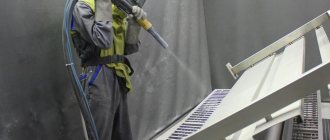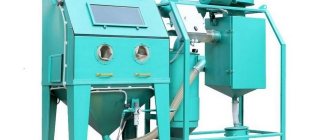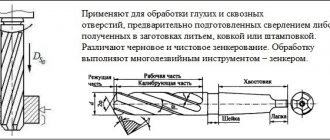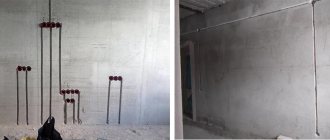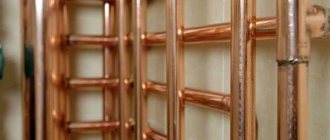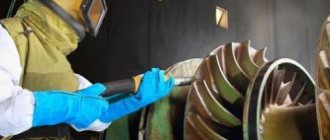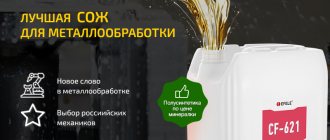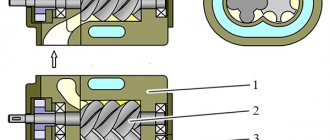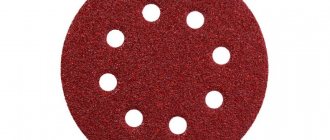Sandblasting of metals is a technology for highly effective cleaning of various surfaces using an abrasive material. It is used as preparatory work before anti-corrosion or paint and varnish treatment of the surface. This method allows you to remove paint, rust, and also degrease the workpiece. Widely used in various industries: metallurgy, automotive industry, metal structures, instrument making.
Types of sandblasting
There are several types of metal cleaning:
- Easy. This type of sandblasting involves surface cleaning: it removes traces of old paint and large pockets of corrosion. The effectiveness of the effect is comparable to treatment with a metal brush. Upon visual inspection there should be no obvious signs of corrosion or contamination.
- Average. More thorough sandblasting. After processing the metal, minor traces of rust remain - no more than 10% of the total surface area.
- Deep. Completely removes traces of any contaminants. The metal surface should look absolutely clean. This type requires significant consumption of abrasive substances.
There is also an international standard for the degree of surface preparation. Evaluation is carried out by visual inspection. There are four degrees:
- Sa 1. Light sandblasting of metal.
- Sa 1–2. Sandblasting without mirror effect of metal.
- Sa 2–2.5. Sandblasting until the metal is almost shiny.
- Sa 3. Complete sandblasting until the metal shines.
Additional Information. Most manufacturers of paint and varnish products require preliminary surface preparation. Sandblasting metal allows you to not only clean, but also degrease the painted area. Thanks to this, the technology in question is considered the most effective.
Tools for monitoring the degree of cleaning
To determine the degree of purification of a product from contamination according to GOST 9.402-2004, use
Guidelines for visual assessment of steel surfaces after abrasive blastingIt is used when assessing the surface of steel surfaces prepared for painting by methods such as abrasive blasting, cleaning with hand and mechanical tools. The guide can serve as a tool for visually assessing rust levels and preparation levels and includes 24 typical photographic examples of original surface rust levels. This guide presents the four levels (“rust grades”) of mill scale and rust that are commonly found on the surface of uncoated steel structures and stocked steel products. Also described are the degrees of visual cleanliness (“grades of preparation”) after preparing an uncoated steel surface and a steel surface after complete removal of previous coatings. These levels are given in accordance with the main international standards: ISO 8501-1:2007; SIS 05 59 00-1989; SSPC-Vis 1-89; DIN 55928. Detailed description>>> |
Purity template GOST 9.402-2004This is a plate of transparent plastic, measuring 25x25 mm, on which mutually perpendicular lines are applied, which form squares measuring 2.5x2.5 mm. The plate is moved over the surface of the product. The degree of cleaning from scale and rust is determined by the ratio of the number of squares occupied by scale and rust to the total number of squares, expressed as a percentage. Detailed description>>> |
The essence and purpose of the technology
The operating principle of the technology is based on the interaction of the abrasive with the metal surface.
A compressor is used as a working mechanism, which creates the necessary pressure in the working system. Sand or other material used is captured by the air flow and thrown onto the work surface. The average operating pressure of the system is 8 atmospheres, and therefore the speed of particles supplied by pressure can reach 700–720 m/s. This indicator ensures thorough cleaning, and therefore experts consider sandblasting to be the best preparation for painting metal. By exposing the surface to abrasive particles, two goals are achieved:
- clean metal from contamination;
- give roughness.
The use of various materials allows you to focus on one or another action. The roughness of the plane increases the adhesive properties of paints and varnishes, which ultimately affects the service life of the coating.
Please note that maximum durability can only be achieved by deep sandblasting the metal surface. If you do not get rid of traces of corrosion, the lesion will develop even under a layer of paint.
Industrial enterprises use sandblasting of metal structures to remove rust and dirt. The cleaned metal surface allows for high-quality welding work.
Dry cleaning application
Sandblasting ensures high-quality surface preparation, as well as safe operation of pipelines in industry and public utilities. They process new pipes, pipelines in operation and old products.
- The new pipe is sandblasted to remove mill scale, traces of corrosion and prepare for coating. Also, this processing sets the required roughness of the product according to the technological specifications.
- Main pipelines are periodically cleaned of rust, plaque, carbon deposits and other contaminants, followed by the application of protective coatings. This treatment extends the service life of pipes. This is especially true for housing and communal services, thermal power plants and boiler houses during preparation for the heating season.
- Used pipes are sandblasted to remove rust and oil residues for further use in other industries. For example: a pipe from an oil pipeline treated in this way is used in construction.
Pros and cons of sandblasting
Compared to other processing methods, experts highlight a number of advantages:
- Performance. Sandblasting an area is much faster.
- Quality. The high speed of the abrasive ensures the removal of any contaminants from the metal. The adjustment range allows you to achieve the desired degree of cleaning. The impact on the metal does not reduce its properties and does not affect the thickness.
- Practicality. Models differ in different operating parameters and dimensions: from compact devices for a private garage to sandblasting units for industrial use.
- Versatility. Components and consumables for any type of work are available for sale.
VIEW Portable Sandblasting Machine on AliExpress →
With all the positive aspects, there are some disadvantages:
- Operator training. It is necessary to complete a special training course in order to master all the skills of high-quality and safe sandblasting work.
- Price. The use of sandblasting metal in industrial production requires significant financial investments. In addition, to carry out the work it is necessary to select a separate room and find qualified workers.
- Operation at home. The use of sand as an abrasive material is associated with certain difficulties: after completion of work, sand particles remain in the air, increasing the dust level. Without personal protective equipment, respiratory tract damage can occur.
Comparison with analogues
The blasting treatment method has more advantages than other methods. Chemical cleaning is not always applicable. The structural material being cleaned may react with reagents used as cleaning mixtures. This may lead to partial or complete destruction of the product.
Chemical cleaning of concrete surfaces is very difficult. It is difficult to achieve a uniform impact; after treatment, you need to rinse the surface with water and remove exfoliated concrete. If the layer is significantly contaminated, part of it is removed mechanically. If it is saturated with oil to its full depth, chemical cleaning of concrete is impossible in this case.
The sandblasting method is limited in use due to the possibility of injury to operating personnel, the need to carefully protect workers and equipment from dust and high noise levels. With a large volume of cleaning work performed, it is necessary to remove a significant amount of abrasive material. Processing brick with an abrasive leaves a roughness on the surface, and the glass loses its transparency, becoming dull.
Advantages of blasting technology:
- Safety
- low consumption of cleaning material
- versatility
- careful attitude towards the surface being cleaned
- high efficiency
- high service life of installations
- low amount of waste
- environmental neutrality
- mobility
- chemical neutrality
Main processing rules
High-quality cleaning of the treated surface is possible only if you select the equipment, components and consumables suitable for specific work correctly. Experience shows that to achieve a positive result, the following rules must be followed:
- The performance and pressure of the compressor should be sufficient for the selected sandblasting machine, and ideally have a power reserve of 20–30%.
- It is necessary to use large diameter air supply hoses - this will reduce pressure losses.
- Hose connectors and couplings must have the diameter of the supply hose.
- For large volumes of work, take care of the mobility of the unit.
- Use modern technological developments: remote control, moisture separator, high-strength boron carbide nozzles. The initial investment will pay off quickly.
- Do not skimp on personal protective equipment - this is the key to the sandblaster’s health.
Correctly selected equipment is half the battle. Don’t forget about training and advanced training of equipment operators.
Types of abrasives used
The first models of devices worked exclusively on sand.
This didn't last long. The technology of work involves the use of various materials for cleaning metal. Abrasive materials can be classified according to physical characteristics or origin. The first classification option is as follows:
- Hardness. The speed and intensity of metal processing depends on it.
- Fraction size. According to the laws of physics, large particles have greater impact force.
Important information! For uniform processing of metal, grain size is important. The use of a mixture containing fractions of different sizes leads to excessive consumption of abrasive.
- Form. The cleaning method depends on it. Round abrasive is effective in direct interaction with metal, and elongated fractions act by friction force. There is grain-shaped material. It has a polishing effect.
Based on their origin, abrasives are divided into the following groups:
- Natural. This includes special sand for sandblasting. During the development of technology, natural material was in great demand due to the lack of analogues. Desert and sea sands were especially valued. Modern safety requirements limit their use.
- Vegetable. Agricultural by-products. The seeds, husks or shells are processed and then used in production. The main quality of the material is its soft impact on the working area.
- Industrial. They are divided into three subcategories: metallic, non-metallic, waste from the metallurgical industry. The most famous abrasive of the first group is metal shot. Granulates and shot are made from almost all types of metal. They differ only in the size of the fraction. They are durable. Non-metallic abrasive is an industrial product. Features uniform grain size. It has high strength and excellent cleaning properties. A striking example is glass grain. The material from the last subcategory is obtained from waste slag. Has average characteristics. The main advantage is that industrial regions are able to supply this abrasive in large quantities.
Video – processing with Nordblast NB 28-2
The flow speed at the outlet of the Venturi pipe reaches 720 km/h. Increasing the speed of the mixture increases the amount of energy released by the particles. This greatly affects the efficiency of the cleaning process. The air mixture supply can be adjusted manually, separately from the compressed air supply from the compressor.
The installation uses a vibrator to maintain the soda in a powdery state and facilitate its absorption into the main line. The body and various parts of the Norddlast NB 28-2 are made of stainless steel and non-ferrous alloys. All materials are acid-resistant and protected from static electricity.
As an option, a supply air dryer with a moisture separator can be ordered. The reinforced design of wheels with rubber tires makes it easy to move the unit and place it in hard-to-reach places. Depending on the task and the object being processed, it provides for the use of glass granules and metal sand balls as cleaning materials. This allows it to be used as a sandblaster.
Using the Norddlast NB 28-2 you can clean rust, dirt, and old paint. It is especially in demand in the metallurgical industry for removing scale and slag from parts, in ship repair shops for cleaning the bottom of various ships, in auto repair centers for removing old paint from a car body. It is used for restoration work and odor removal.
Types of sandblasting equipment
Manufacturers offer two types of equipment for sandblasting metal:
- Mobile device. Compact dimensions allow the unit to be moved by one person. The scope of work is limited only by supplies of consumables. Safety equipment is required for operation. Within the operating range of the device, dusty air can pose a danger to people.
- Automatic sandblasting chamber. It is safe for the installation operator. The enclosed space allows you to collect abrasive after work. Requires a high-quality ventilation system. The dimensions of the processed parts are limited.
Review of sandblasting machines and cost
There are three types of mobile sandblasting machines, which differ both in operating principle and in price. Let's look at each type.
VIEW Sandblasting equipment on AliExpress →
Pressure type device
Its peculiarity is the method of supplying abrasive, which enters the metal surface through one channel with compressed air. It has good performance, but is dependent on the power of the compressor unit. Suitable for cleaning large surfaces. Widely used in industrial enterprises for repairing metal structures. The minimum cost of such units is $300. An installation with average performance costs about $1000.
Additional Information! On the Internet you can find a diagram of the design of pressure devices. An experienced welder can assemble the installation within a week.
Injection type device
Abrasive and air enter through separate channels. Because of this, the nozzle holder has an air and abrasive nozzle. It has low performance. This determines the scope of application of the devices - decorative processing of mirrors and other surfaces. The cost does not exceed $300.
Vacuum devices
They were developed as a type of pressure apparatus, but their design features separated them into a separate class. After contact with the metal, the abrasive is sucked into the device by vacuum. However, it reduces the kinetic energy of the particles, which affects power. Low productivity and high cost have led to the fact that such units are used very rarely.
Features of powder painting of metal products
What is powder coating
Powder painting of metal products differs from other methods in that the paint is applied to the surface in the form of a powder, not a liquid. After sandblasting, the product is placed in the spray chamber. Powdered paint is poured into a feeding container, then air is supplied into it under pressure to obtain a powder suspension.
After this, using an air pump, the suspension is fed into the sprayer, in which the powder particles are charged by an electrostatic field (classical method) or as a result of friction against the walls of the sprayer (tribostatic method). Next, the charged powder enters the spray chamber and is attracted by the electrostatic field to the neutral metal product.
At the final stage, it is necessary to finally form the protective coating. To do this, the metal product is placed in an oven. Melting of the powder occurs at a temperature of +150...220 °C, and its polymerization (formation of a hard coating) lasts 15-30 minutes. The exact indicators depend on the composition of the paint, the grade of metal and the size of the product.
Powder coating protects the metal surface for up to 50 years
What are the benefits of powder coating of metal products?
Powder painting allows you to obtain a uniform, high-quality coating that lasts up to 50 years. It is not afraid of atmospheric influences, perfectly protects metal from corrosion and resists mechanical stress well. This set of characteristics makes powder painting a convenient, efficient and reliable way to process metal products.
What paints are used for powder coating?
For powder painting, two types of paints are used:
- Thermoplastic polymerizes when exposed to temperature. Such powders are made on the basis of polyvinyl butyrol, polyvinyl chloride, polyamide or polyesters. Polyvinyl chloride paints have the best weather resistance, and compositions based on polyvinyl butyrol have the best resistance to aggressive environments.
- Thermosetting paints polymerize as a result of chemical reactions. They are made on the basis of polyurethane, acrylates, polyester or epoxy resins. The best choice to give the product an aesthetic appearance is acrylate or polyurethane paint. Polyester compositions have excellent weather resistance, and epoxy paints are most resistant to mechanical damage and exposure to aggressive substances.
What to look for when choosing a sandblasting machine
At the stage of selecting the necessary equipment, experts recommend paying attention to the following nuances:
- The dimensions and weight of the compressor are the key to comfortable movement around the work site.
- The manufacturer must produce the tank in accordance with the safety requirements for the manufacture of pressure vessels.
- A large number of hoses and fittings leads to a loss of performance of the device. For best performance, we recommend using sleeves with a diameter of at least one inch.
- The device must be adapted for all types of abrasive materials: from sand to cast iron shot.
- To ensure additional safety, you can purchase a unit with an additional safety valve that operates automatically.
- The volume of the container for storing consumables should be 60% of the capacity of the pressure vessel. A separate worker is required to service it.
- Pay attention to the volume of the pressure tank. When fully loaded, the abrasive should last at least 30 minutes. Material consumption is calculated based on the nozzle diameter and pressure force. The jet power does not affect the capacity.
- It is imperative to have a dosing mechanism that optimizes sand consumption.
- Shut-off valves are installed on the inlet and outlet lines.
- A large inspection hatch provides comfortable access to the loading area.
- When working with reusable materials, a special filter in the form of a sieve is installed on the loading funnel, which filters out grains of the wrong size.
- For long periods of work, use a compressor with a double tank.
Sandblasting machines entered the domestic market relatively recently, but users have already appreciated the convenience and performance of these devices when carrying out preparatory work on metal surfaces. If you have experience successfully using sandblasting technologies at home, share it in the comments section.
General safety rules when working with sandblasting
Sandblasting must be carried out in compliance with all safety rules. The operator in the operating area is inevitably at risk. The main one lies in the release of fine dust into the air, silica when working with sand, and others when using other abrasives. In addition to the residues formed by the destruction of the mixture used, tiny particles of the coating being destroyed inevitably enter the air. This can be a wide variety of substances, ranging from scale to toxic agents of paints and varnishes.
Sandblasting must be carried out in compliance with basic safety regulations.
- The operator is required to use a special protective suit with a respiratory mask that reliably isolates the person from the environment.
- Sandblasting is only permitted for persons over 18 years of age.
- In cases where cleaning is carried out in closed chambers, operators engaged in the task must use hose gas masks. It is permissible to use closed masks with air supply from outside the work area. Also, for protection, operators can use spacesuits with an air filtration system from oil vapors and dust.
- Closed rooms for working with sandblasting equipment must be equipped with forced ventilation systems.
- When working at height when cleaning building walls, the use of safety equipment is mandatory.
Important! Before starting work, the operator carefully checks the condition of the hoses, grounding the sandblaster to neutralize static voltage, inspects the power wires and assesses the condition of the injection unit.
The employee is required to undergo safety training. For sandblasting machines, the area of knowledge includes not only information about the procedure for performing work with the device in various conditions. Plant operators are required to know the safety rules when working with high pressure cylinders. In industrial conditions, the enterprise conducts quarterly re-instruction of personnel on labor protection. An annual inspection of buildings for safety precautions when working with sandblasting equipment is also organized. A medical examination for employed personnel is carried out once a year.
